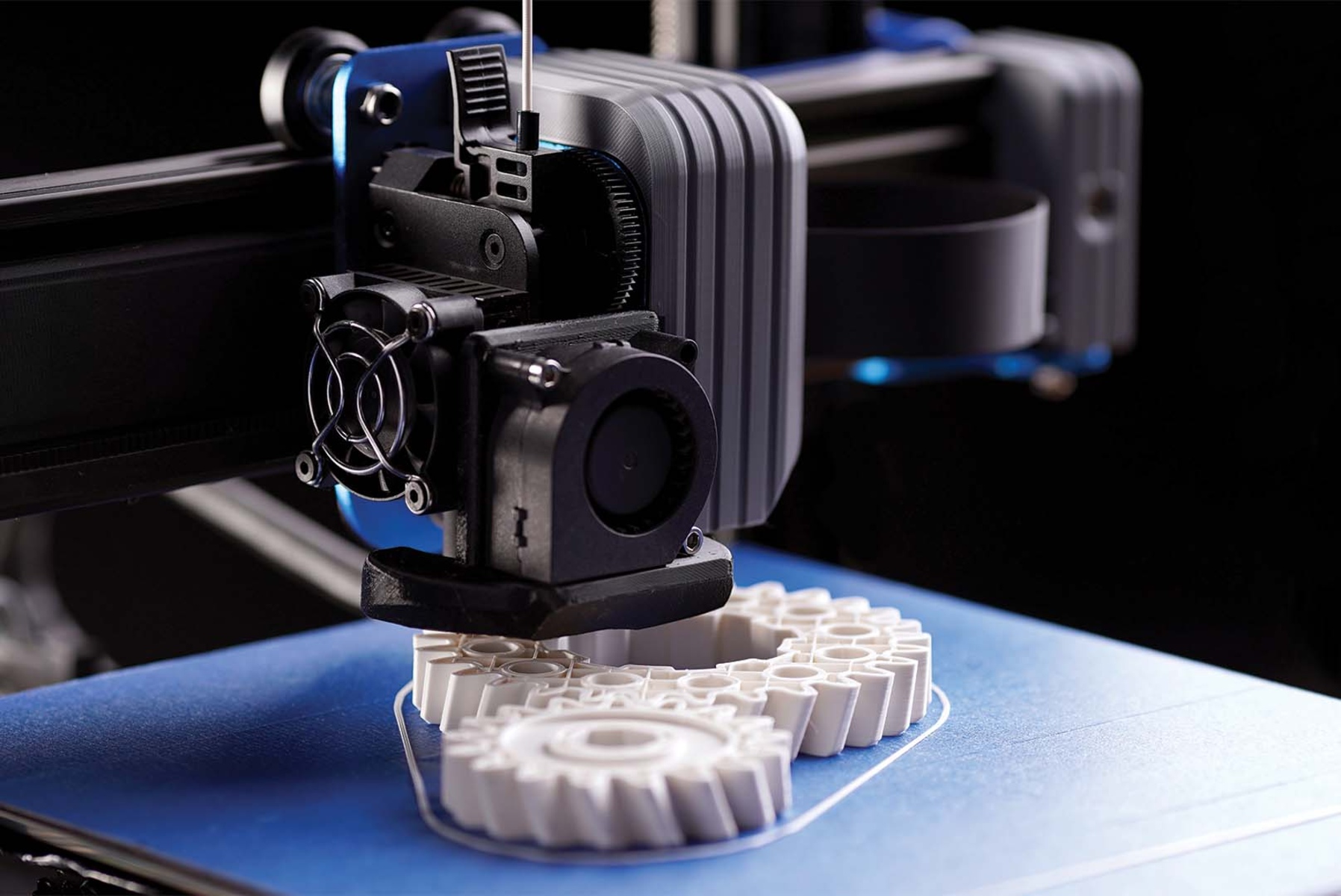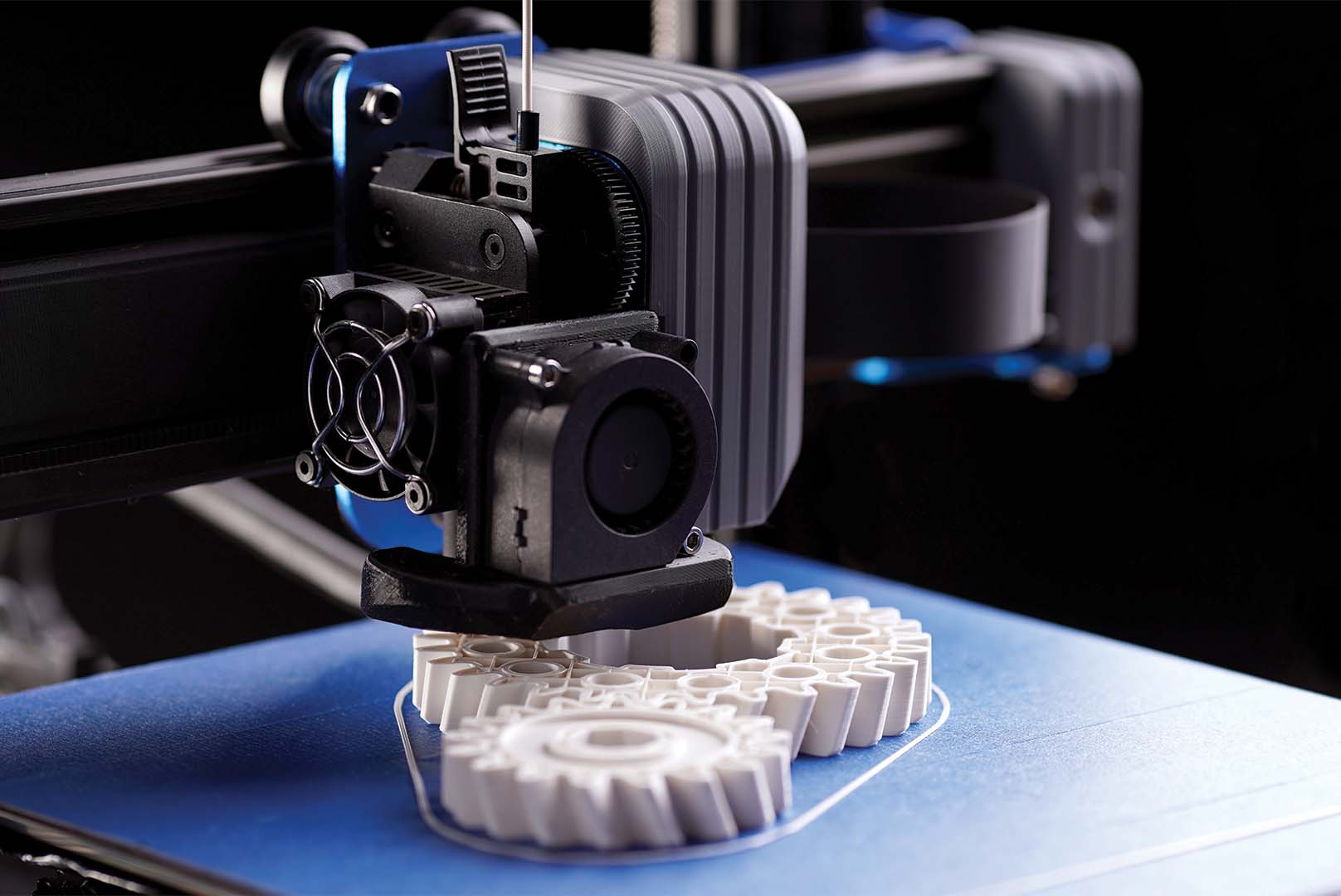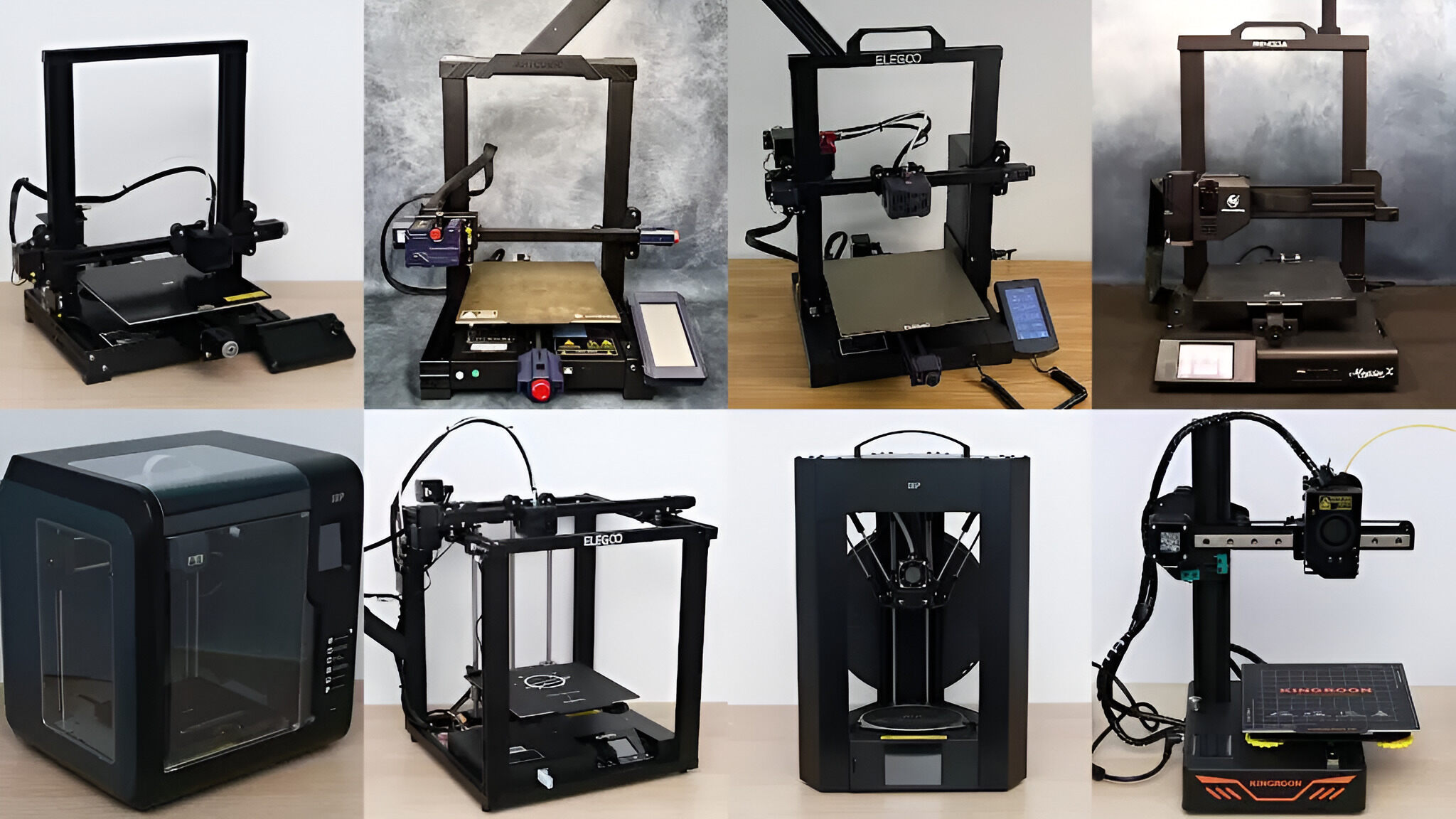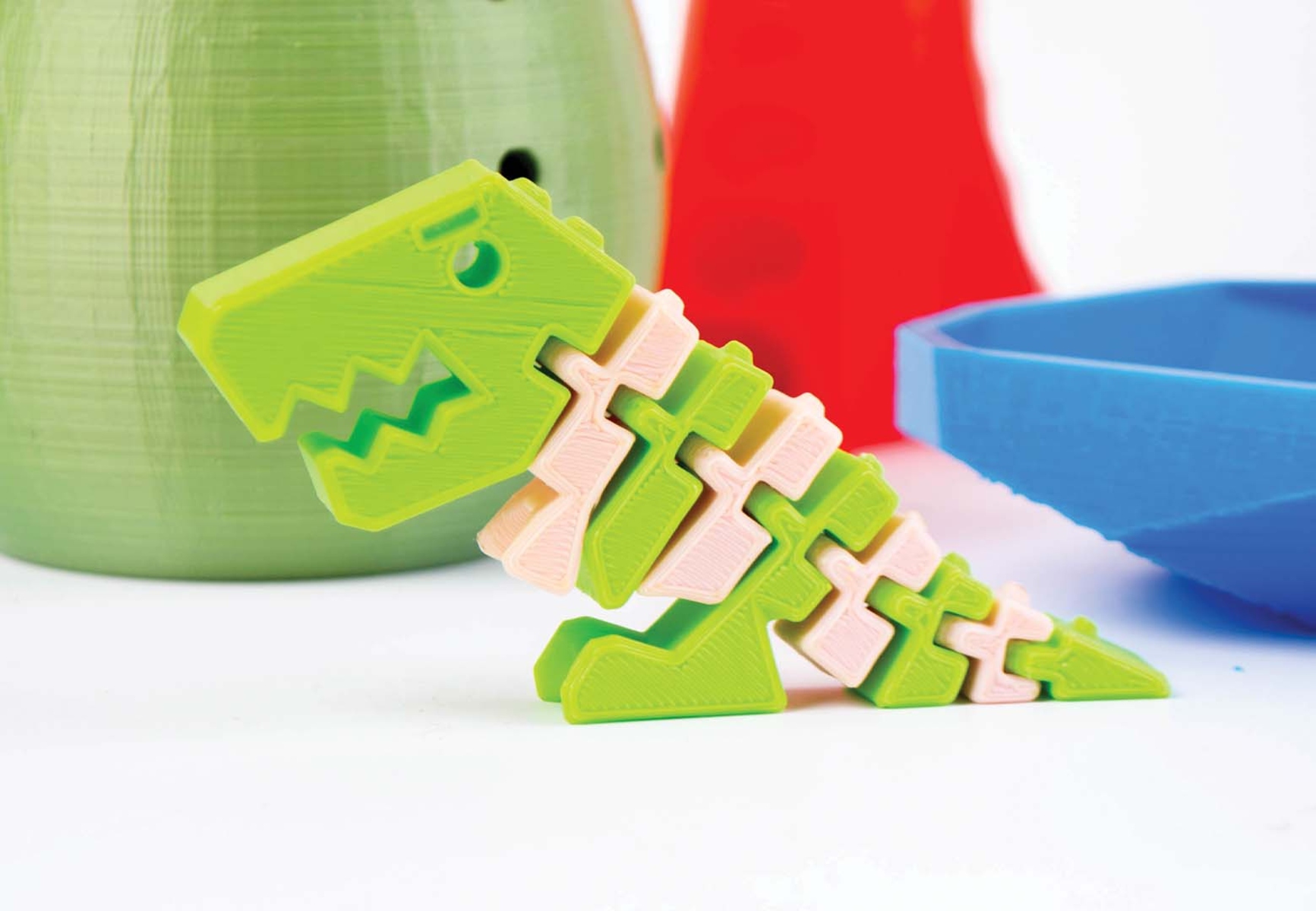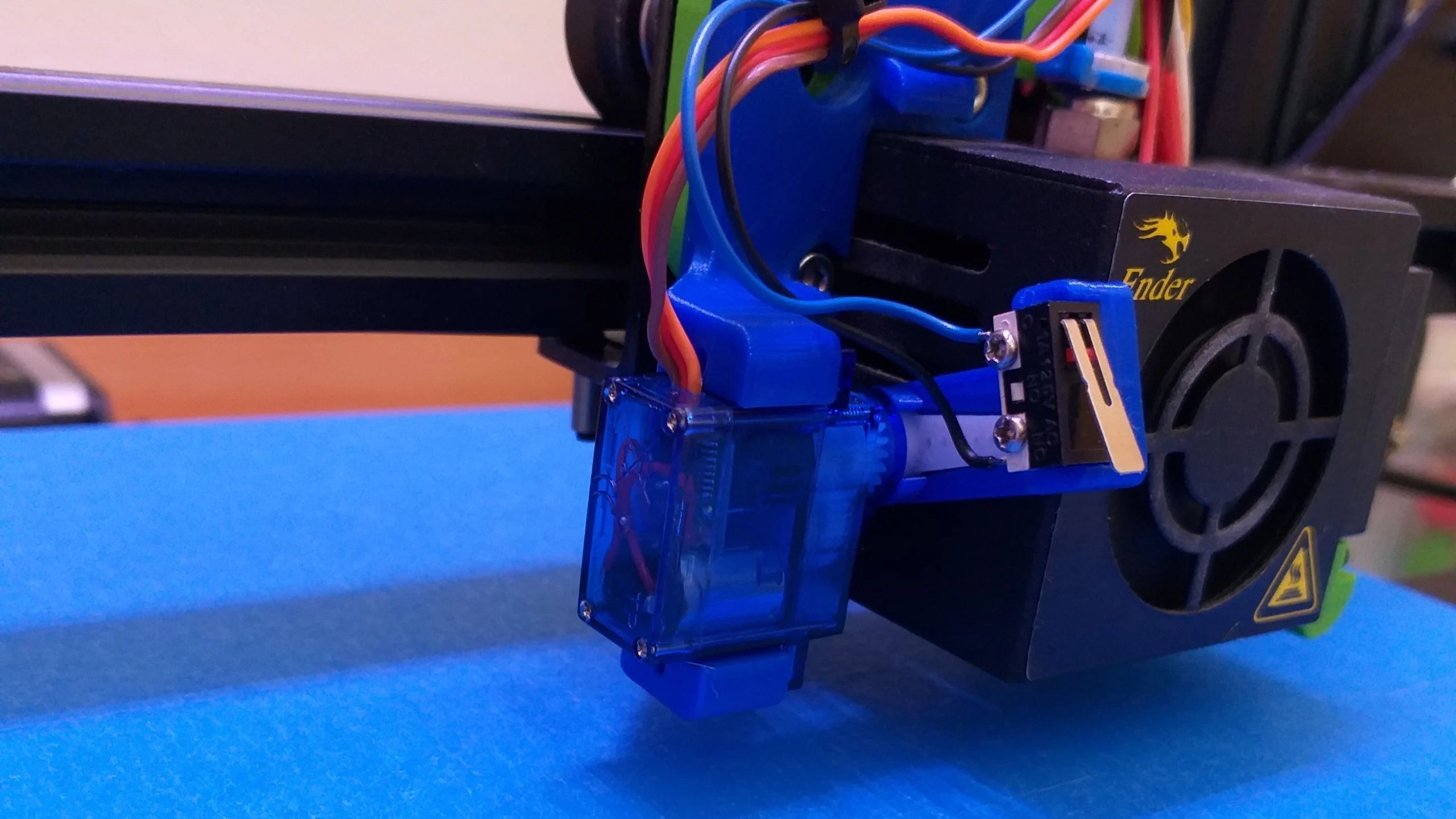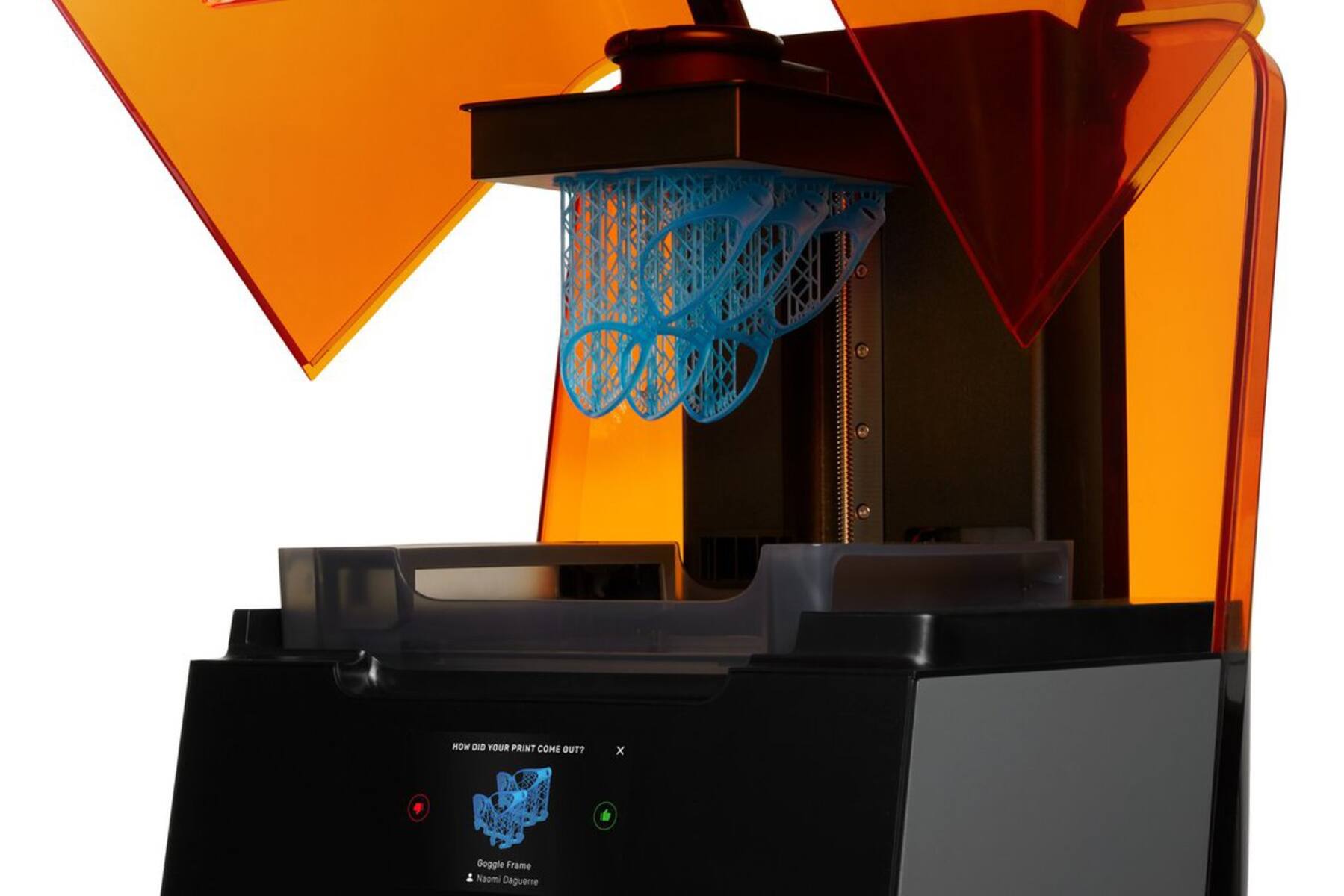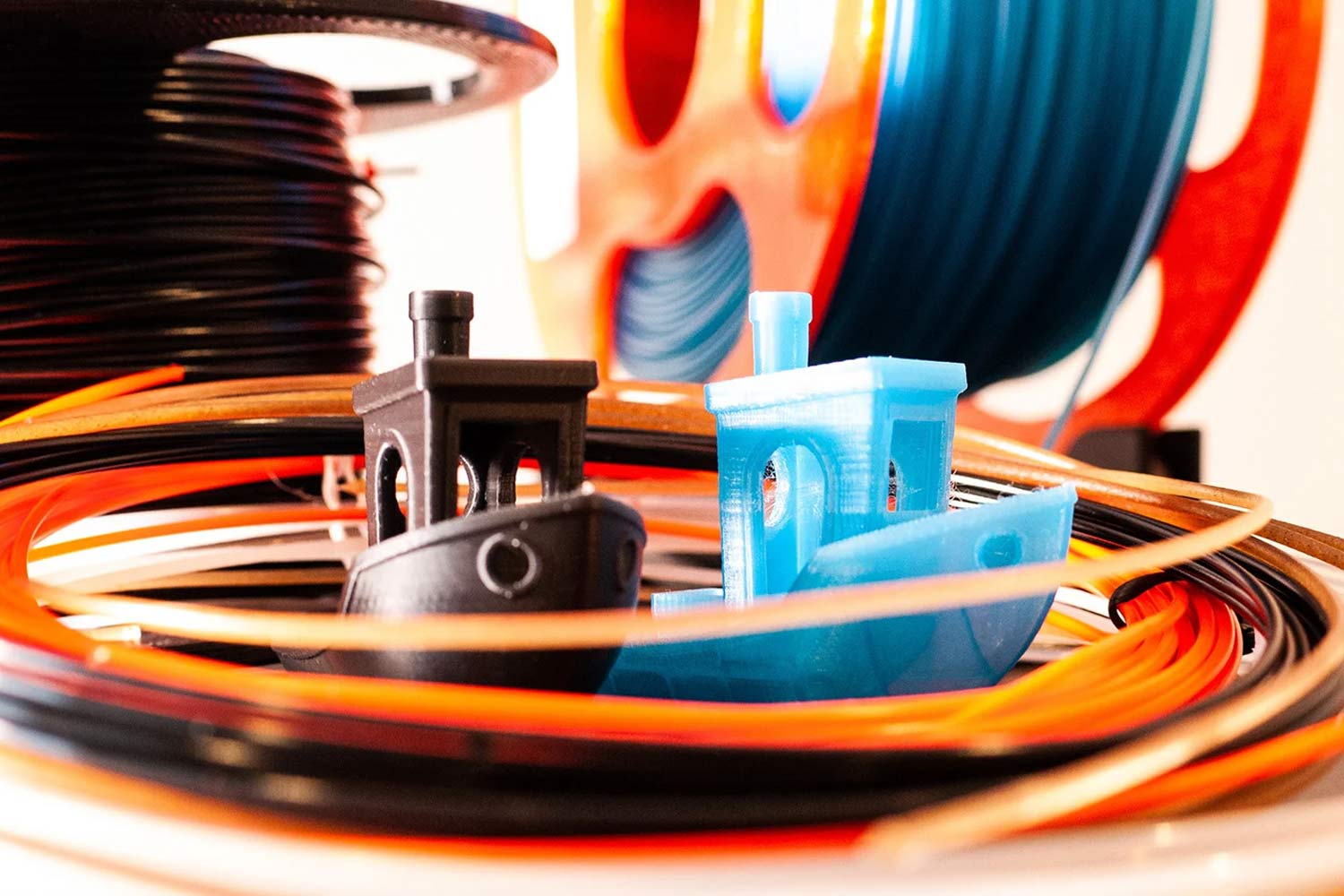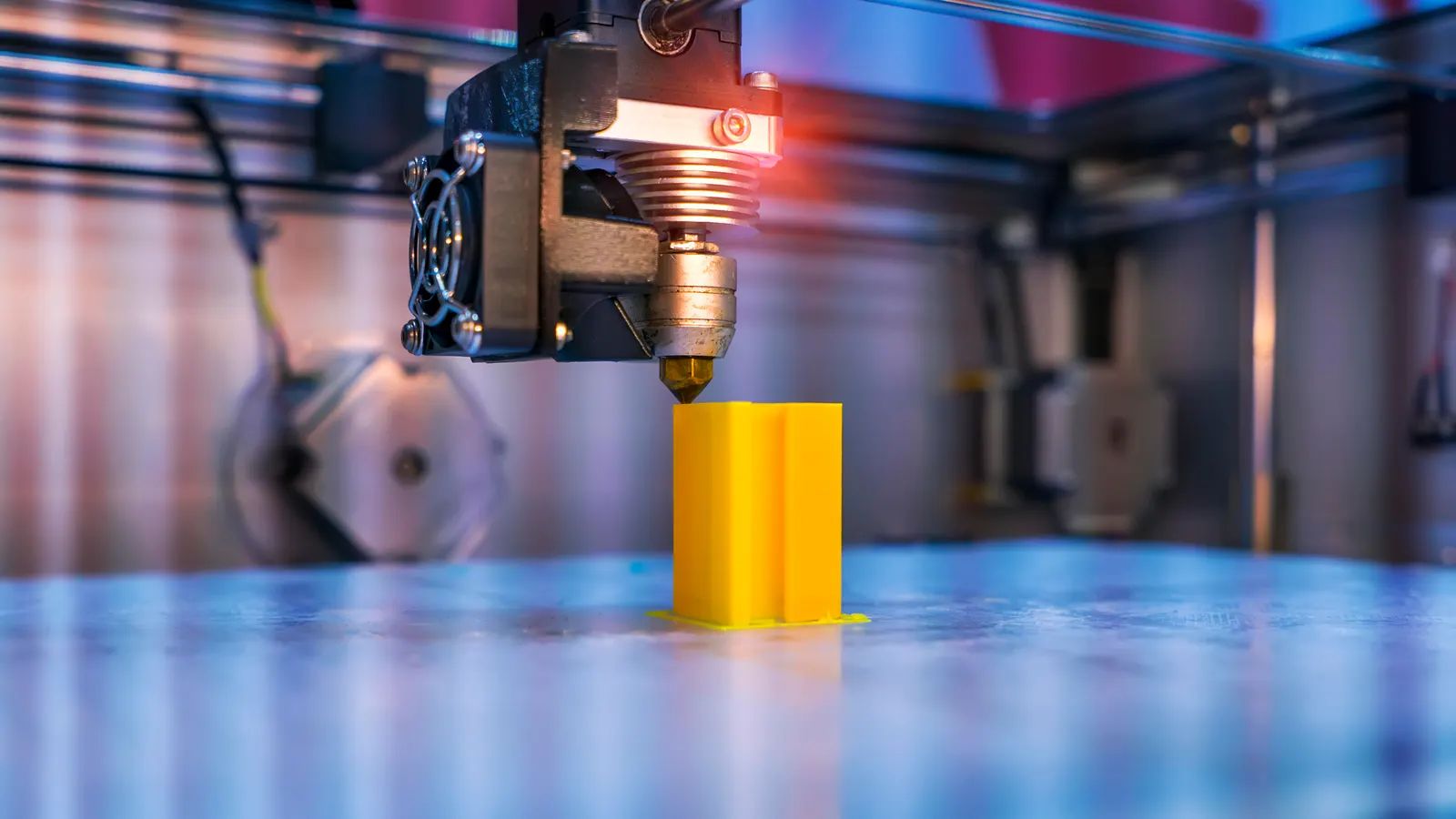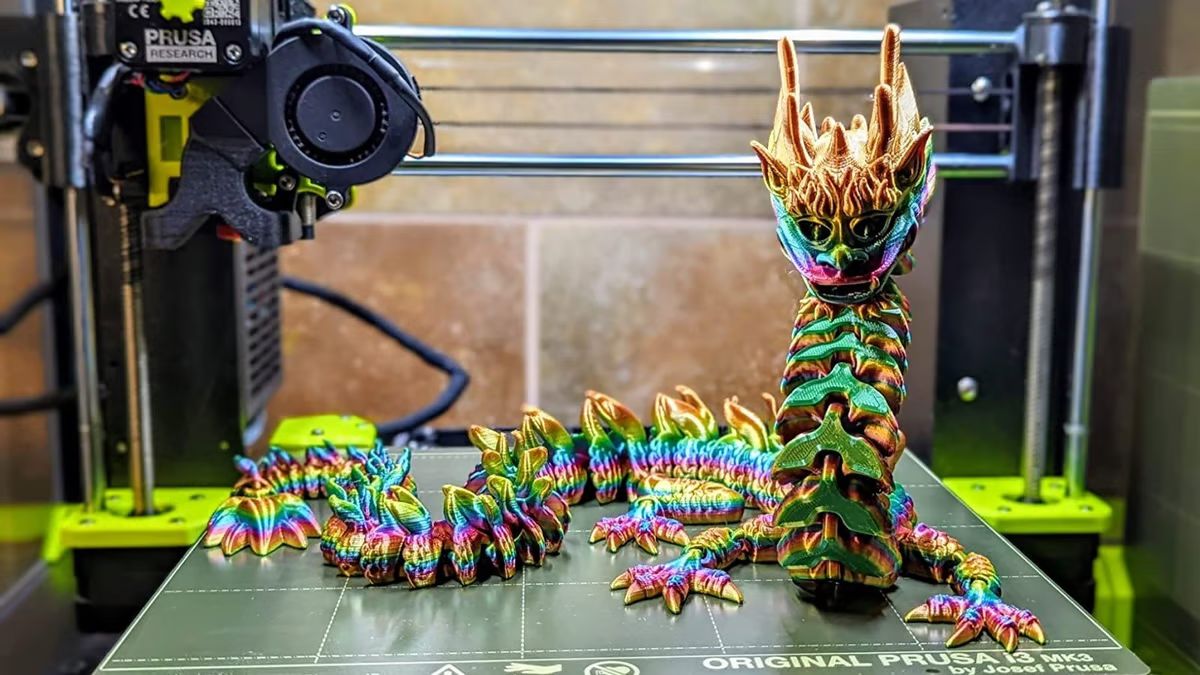Introduction
Welcome to the world of 3D printing, where innovative technologies are revolutionizing manufacturing processes. One such technology that has gained significant popularity in recent years is FDM, which stands for Fused Deposition Modeling. Whether you’re a hobbyist, an engineer, or a designer, understanding the fundamentals of FDM is crucial for harnessing its full potential.
FDM, also known as FFF (Fused Filament Fabrication), is a widely-used 3D printing process that allows for the creation of three-dimensional objects by depositing material layer by layer. It is one of the most accessible and cost-effective methods of 3D printing, making it popular among both beginners and professionals.
In this article, we will explore the intricacies of FDM printing, including how it works, its benefits and limitations, as well as its various applications in different industries. Additionally, we will discuss some of the major FDM printers and technologies currently available and provide you with tips for successful FDM printing.
So, whether you’re a newcomer to the world of 3D printing or an experienced enthusiast looking to expand your knowledge, read on to discover the fascinating world of FDM and its incredible potential.
What Is FDM?
Fused Deposition Modeling (FDM), also known as Fused Filament Fabrication (FFF), is a 3D printing technology that utilizes a thermoplastic filament to build three-dimensional objects. It was developed by Scott Crump in the late 1980s and has since become one of the most widely used methods of 3D printing.
FDM works by feeding a filament, typically made of ABS or PLA, through an extruder. The filament is then heated to its melting point, and the liquefied material is deposited in layers onto a build platform. The layers cool and solidify, creating a solid object.
One of the key advantages of FDM printing is its simplicity. Compared to other 3D printing technologies, FDM printers are relatively affordable and user-friendly, making them accessible to a wide range of individuals, from hobbyists to professionals.
Furthermore, FDM offers a versatile range of filament options, allowing users to choose from various materials with different properties, such as strength, flexibility, and heat resistance. This versatility makes FDM suitable for a wide range of applications, from prototyping and product development to creating functional parts and complex geometries.
Another notable aspect of FDM is its ability to produce objects with intricate details and smooth surfaces. However, it is important to note that the quality of the final print depends on several factors, including the printer’s resolution, the filament used, and the printing parameters set by the user.
While FDM technology has its limitations, such as limited print resolution and the need for support structures for certain designs, it remains a popular choice due to its accessibility, versatility, and cost-effectiveness.
In the next section, we will dive deeper into how FDM actually works and explore the step-by-step process of creating objects using this technology.
How Does FDM Work?
Fused Deposition Modeling (FDM) is a layer-by-layer additive manufacturing process that brings 3D designs to life. Understanding the step-by-step process of how FDM works will give you insight into how objects are created using this technology.
The FDM process begins with a 3D model, which is typically created using computer-aided design (CAD) software. The model is then exported as an STL file, which is the common format used in 3D printing.
Once the STL file is ready, it is imported into slicing software, which prepares the model for printing. The slicing software divides the model into multiple layers, with each layer representing a cross-section of the final object. It also generates the toolpaths that the 3D printer will follow when depositing the filament.
With the sliced file ready, it can be loaded onto the FDM printer. Before printing begins, the printer needs to be set up with the appropriate filament and printing parameters. The filament is typically housed in a spool and fed into the printer through an extruder. The printer’s extruder is responsible for heating the filament, melting it, and then depositing it to create the 3D object.
The extruder consists of a hot end, which contains a nozzle through which the filament is extruded, and a heating element that ensures the filament reaches the proper temperature for melting. The bed of the printer, known as the build platform, is where the object will be printed.
Once the printer is ready to start, it begins moving the extruder along the X, Y, and Z axes based on the toolpaths generated by the slicing software. As the extruder moves, it deposits the heated filament onto the build platform, layer by layer, following the precise pattern defined by the toolpaths.
As each layer is deposited, it cools and solidifies, bonding to the previous layer. This layer-by-layer process continues until the entire object is completed. The cooling and solidification process is essential to ensure the stability and structural integrity of the printed object.
Throughout the printing process, the printer may need to pause to change the filament color or to insert support structures, which provide additional stability for overhanging or intricate parts of the object. These support structures are typically made from a different material and can be removed once the printing is complete.
Once the object is fully printed, it is removed from the build platform and may require additional post-processing, such as sanding or painting, to achieve the desired finish.
Understanding how FDM works can help you optimize your designs and set the appropriate parameters for successful printing. In the next section, we will explore the benefits of FDM printing and why it is widely used in various industries.
Benefits of FDM Printing
Fused Deposition Modeling (FDM) offers several advantages that make it a popular choice for 3D printing. Whether you’re a hobbyist, engineer, or business owner, understanding the benefits of FDM can help you make informed decisions when considering this technology for your projects.
1. Accessibility and Affordability: FDM printers are relatively affordable, making them accessible to a wide range of individuals and small businesses. This accessibility has helped democratize 3D printing, allowing more people to bring their ideas to life.
2. Versatility in Materials: FDM supports a variety of filament materials, including ABS, PLA, PETG, and more. Each material offers different properties, such as strength, flexibility, and heat resistance, allowing you to choose the most suitable material for your specific application.
3. Ease of Use: FDM printers are user-friendly, with intuitive interfaces that make setup and operation relatively straightforward. Additionally, many slicing software options are available, making it easy to convert 3D models into printable files.
4. Rapid Prototyping: FDM is particularly useful for rapid prototyping. It enables designers and engineers to quickly iterate their designs and produce functional prototypes in a fraction of the time and cost compared to traditional manufacturing methods.
5. Customization and Complexity: FDM allows for intricate designs and the creation of complex geometries that would be challenging or impossible with other manufacturing techniques. This capability provides the opportunity for customization and the production of unique, one-of-a-kind objects.
6. Lower Material Waste: With FDM printing, only the required amount of material is used to create the object, resulting in minimal waste compared to subtractive manufacturing processes like CNC machining.
7. In-house Production: FDM printers enable businesses to bring production in-house, reducing dependency on outsourced manufacturing and streamlining the product development and manufacturing cycles.
8. Educational Applications: FDM has been widely adopted in educational institutions as a tool to teach STEM (Science, Technology, Engineering, and Mathematics) subjects. Its accessibility and ease of use make it an ideal learning tool for students of all ages.
These benefits make FDM printing a versatile and cost-effective solution for various industries and applications, including product design, manufacturing, prototyping, education, and more. However, it is important to keep in mind that FDM does have some limitations, which we will discuss in the next section.
Limitations of FDM Printing
While Fused Deposition Modeling (FDM) offers numerous benefits, it is important to be aware of its limitations to make informed decisions about its use in your projects. Understanding these limitations will help you anticipate potential challenges and find appropriate solutions.
1. Limited Print Resolution: FDM printers have limitations when it comes to fine details and intricate designs. The layer height determines the level of detail, and achieving high-resolution prints can be challenging. However, advancements in technology have improved print quality, and some FDM printers can achieve reasonably detailed results.
2. Layer Visibility: Because FDM prints are built layer by layer, the individual layers can be visible on the finished object. This is more pronounced when using larger layer heights, and it may require additional post-processing, such as sanding or painting, to achieve a smoother appearance.
3. Support Structures: FDM printing often requires support structures for overhanging or complex parts of a design. These structures are necessary to ensure proper printability but may need to be removed or cleaned up after printing. This can add time and effort to the post-processing stage.
4. Material Limitations: While FDM supports a range of materials, each with its own unique properties, the selection may not be as extensive compared to other 3D printing technologies. This limitation narrows the options for specific applications that require specific material characteristics, such as temperature resistance or flexibility.
5. Warping and Shrinkage: FDM printing is susceptible to warping and shrinkage, especially when using certain materials like ABS. These issues can lead to distortion or misalignment of the printed object, affecting its dimensional accuracy and stability. Proper calibration, heated beds, and the use of adhesion aids can mitigate warping to some extent.
6. Print Time: FDM printing is a relatively slow process compared to other 3D printing technologies. The layer-by-layer deposition takes time, and larger and more complex objects can require hours or even days to complete. Patience and planning are essential when working with FDM to ensure timely delivery of projects.
7. Limited Strength and Durability: While FDM prints can be strong, the layer-by-layer construction can result in weak points compared to other manufacturing methods like injection molding or CNC machining. However, by selecting appropriate materials and adjusting printing settings, the strength and durability of FDM prints can be optimized.
Despite these limitations, FDM remains a valuable 3D printing technique that is widely used for various applications. Understanding its constraints empowers users to maximize its strengths while finding creative workarounds or considering alternative technologies when necessary.
Next, we will explore some of the diverse applications where FDM has been successfully employed.
Applications of FDM Printing
Fused Deposition Modeling (FDM) has found widespread applications across different industries, leveraging its versatility, accessibility, and affordability. From prototyping to manufacturing, let’s explore some of the key areas where FDM has proven to be invaluable.
1. Prototyping: FDM is widely used in product development for rapid prototyping. It allows designers and engineers to quickly iterate and test their designs before committing to costly tooling or manufacturing processes. FDM enables faster concept validation and design optimization, saving time and resources.
2. Manufacturing and Production: While FDM is primarily known for prototyping, it is also utilized for low-volume manufacturing and production of end-use parts. By bringing production in-house, businesses can reduce lead times and costs associated with outsourcing manufacturing or tooling.
3. Customization: FDM enables customization like no other manufacturing technology. It empowers designers and creators to produce unique, personalized objects tailored to specific requirements, whether it’s a personalized consumer product, a medical device, or customized tooling.
4. Education and Research: FDM has made a significant impact in educational settings as a teaching tool for STEM subjects. Students can learn about design, engineering, and problem-solving by designing and 3D printing their own creations. FDM also contributes to research and development, enabling the production of custom tools and prototypes for scientific experiments and studies.
5. Architecture and Construction: FDM is increasingly being used in architecture and construction sectors. The technology allows architects and designers to create scaled models, architectural prototypes, and custom building components, offering a visual representation of their designs before construction begins.
6. Tools and Fixtures Manufacturing: FDM has proven to be invaluable in creating jigs, fixtures, and tooling used in various manufacturing processes. Customized tools can be quickly produced to improve workflow efficiency, enhance productivity, and reduce costs associated with traditional tooling methods.
7. Healthcare and Medical Applications: FDM has a significant presence in the healthcare industry, where it is used for producing patient-specific anatomical models, surgical guides, prosthetics, and medical devices. FDM enables precise customization, assisting in surgical planning, medical training, and patient care.
8. Art and Design: FDM has also made its mark in the creative world, with artists and designers embracing the technology to push the boundaries of their artistic expressions. FDM allows for the creation of intricate, sculptural pieces, art installations, and decorative objects.
These examples highlight the diverse applications of FDM printing, showcasing its potential in various industries. However, it is important to note that the success of these applications relies on proper design considerations, appropriate material selection, and optimal printing parameters.
Next, let’s delve into some of the major FDM printer manufacturers and technologies that are driving innovation in this field.
Major FDM Printers and Technologies
Over the years, several major manufacturers have emerged in the Fused Deposition Modeling (FDM) 3D printing market, offering a range of printers and technologies that cater to different needs and budgets. Let’s explore some of the prominent players in the industry and the technologies they employ.
1. Ultimaker: Ultimaker is a well-known manufacturer that offers a diverse lineup of FDM printers. Their printers are widely recognized for their reliability, ease of use, and high-quality prints. Ultimaker printers use an open-source ecosystem, allowing users to experiment with different materials and software configurations.
2. MakerBot: MakerBot is another established name in the FDM arena. They offer a range of printers suitable for both professional and educational use. MakerBot incorporates innovative features like a smart extruder and wireless connectivity, making their printers user-friendly and efficient.
3. Prusa Research: Prusa Research is renowned for its Prusa i3 MK3 series, which has gained a reputation for affordability, reliability, and exceptional print quality. Prusa printers employ open-source technology and are highly regarded within the 3D printing community for their constant innovation and community support.
4. Formlabs: While primarily known for their SLA (Stereolithography) printers, Formlabs also offers an FDM printer called the Form 3. Formlabs is recognized for its attention to detail and delivering exceptional print resolution. The Form 3 combines the accessibility of FDM printing with Formlabs’ expertise in resin-based printing.
5. Raise3D: Raise3D produces a range of professional-grade FDM printers known for their large build volumes and high-resolution prints. Their printers incorporate advanced features such as dual extrusion and a robust hardware design, making them popular among professionals and businesses.
These are just a few examples, and the market offers a wide variety of other FDM printer manufacturers and technologies. Each manufacturer brings unique features and capabilities to the table, allowing users to choose printers that align with their specific requirements.
Additionally, FDM technology continues to advance, with ongoing research and development efforts pushing the boundaries of what is possible. This includes improvements in print quality, speed, and the development of new materials with enhanced characteristics.
As FDM technology continues to evolve, it is vital to stay updated on the latest advancements and explore different options to find the most suitable printer and technology for your specific needs.
Now, let’s move on to the next section, where we will provide you with some valuable tips for successful FDM printing.
Tips for Successful FDM Printing
Fused Deposition Modeling (FDM) 3D printing can be a rewarding process, but achieving consistent and high-quality prints requires attention to detail and proper optimization of various parameters. Here are some valuable tips to help you achieve successful FDM prints.
1. Calibrate Your Printer: Calibration is crucial for ensuring accurate print dimensions and proper extrusion. Verify that your printer’s bed is level, and calibrate the extruder’s steps-per-millimeter settings to achieve precise filament extrusion.
2. Choose the Right Filament: Select a filament material that suits your printing needs. Consider factors such as strength, flexibility, heat resistance, and color. It is also essential to purchase high-quality filaments from trusted manufacturers to minimize the risk of print failures.
3. Optimize Temperature Settings: Experiment with different temperature settings to find the optimal temperature for your filament. Depending on the material, adjusting nozzle and bed temperatures can significantly impact print quality, adhesion, and layer bonding.
4. Utilize Supports Effectively: In designs that require supports, ensure they are properly placed to provide adequate support without impacting the overall surface finish. Consider using soluble supports or easily removable support materials for complex prints.
5. Consider Layer Height and Print Speed: Finding the right balance between layer height and print speed is crucial. Higher layer heights can result in faster prints but may sacrifice surface quality. Adjust the print speed based on your desired print quality and complexity of the design.
6. Pay Attention to Cooling: Proper cooling is essential, especially for smaller and intricate prints. Use a fan or adjust the cooling settings on your printer to minimize warping, improve overhangs, and enhance overall print quality.
7. Check Filament Flow and Retraction Settings: Ensure that your printer’s filament is flowing smoothly by checking for any obstructions or partial blockages. Optimize retraction settings to reduce the likelihood of stringing or oozing between layers.
8. Use Quality Slicing Software: Invest in reliable and feature-rich slicing software to optimize your prints. Experiment with different settings, such as infill density, wall thickness, and print orientation, to achieve the desired strength, detail, and surface finish.
9. Monitor Print Progress: Whenever possible, keep an eye on your print progress to address any issues that may arise, such as filament jams, bed adhesion problems, or layer shifting. Early detection and timely intervention can save time and material.
10. Post-Processing and Finishing: After printing, perform any necessary post-processing, such as sanding, filing, or painting, to achieve the desired surface finish. Take your time to clean up any support remnants or artifacts to ensure a professional-looking final print.
By following these tips and refining your printing techniques through experience and experimentation, you can achieve consistent and high-quality FDM prints. Remember that practice and patience are key to mastering the art of FDM 3D printing.
With these tips in mind, we conclude our exploration of Fused Deposition Modeling (FDM) and its various aspects. Whether you are a beginner or an experienced user, may your journey into the world of FDM printing be filled with creativity, innovation, and successful prints.
Conclusion
Fused Deposition Modeling (FDM) technology has transformed the world of 3D printing, offering accessibility, versatility, and cost-effectiveness to users across a wide range of industries. The simplicity of FDM printing, coupled with the ability to create functional prototypes and end-use parts, has made it a popular choice for professionals, hobbyists, and educators alike.
In this article, we explored the fundamentals of FDM, its step-by-step process, and the benefits it offers. We also discussed the limitations of FDM printing and highlighted some of its diverse applications, including prototyping, manufacturing, education, and healthcare.
Additionally, we covered major FDM printer manufacturers and technologies, showcasing the variety of options available in the market. It is essential to research and select a printer that aligns with your specific needs and budget.
To ensure successful FDM printing, we provided valuable tips, ranging from proper calibration and material selection to optimizing print settings and leveraging support structures effectively. Following these tips and continuously refining your techniques will help you achieve consistent and high-quality prints.
As FDM technology continues to advance, it is an exciting time to explore its possibilities and push the boundaries of what is achievable. The field holds great promise for innovations in design, manufacturing, and various other industries.
So, whether you’re a beginner just starting your journey into the world of 3D printing or an experienced user striving for perfection, remember to embrace the learning process, embrace experimentation, and embrace the creativity that FDM brings to your projects.
With the knowledge gained from this article and a passion for exploring the potential of FDM, we hope you embark on a successful and fulfilling journey in the realm of fused deposition modeling. Happy printing!







